
“With this Desk a man absolutely has no excuse for slovenly habits in the disposal of his numerous papers, and the man of method may here realize that pleasure and comfort which is only to be attained in the verification of the maxim, ‘A place for everything and everything in its place’. “ (Advertisement, circa 1880, for the Wooton Cabinet Office Secretary.)
With dozens of pigeonholes and compartments, hinged and rotating parts, and elaborate exteriors, Wooton Patent Desks embodied the Victorian love of things adaptable, convenient and complex. Both in their construction and use, these desks reflect the drastic changes in the manufacturing and business world during the 19th century. Wooton desks (see the photos above and others on the following pages), manufactured in Indiana from 1 874 to 1 897, were typical of the increasing use of mass-production techniques and machinery to yield high-quality furniture in quantities sufficient to satisfy the worldwide markets opened by expanding communication and transportation systems. The design of the desks provided an ingenious solution to the businessman’s problem of organizing the increasing volume of paperwork that accompanied the rapid expansion of business. From both the business and design perspectives, the Wooton Patent Desk earned the sobriquet “Desk of the Age.”
The founder of the desk-manufacturing company, William S. Wooton, was born in Ohio on May 12, 1835, the eighth of thirteen children. Records from the Friends Church show that prior to 1860, he was living near Terre Haute, Ind., where he was a member of the Honey Creek monthly meeting. By 1860 he had moved to Richmond, Ind., where he was listed as a patternmaker in the City directory. From April to December of 1869, Wooton was a partner in the Richmond furniture manufacturing firm of George H. Grant and Co., which mass-produced school, office, and court furnishings. In 1868 and 1869, while working in Richmond, Wooton designed and patented a school desk and chair that could be folded together for easy storage and transport, demonstrating his interest in adaptable furniture, as well as his concern for protecting his inventions with patents.
When Wooton moved to Indianapolis in 1870, he established William S. Wooton and Co. During its first year of business and with only four employees, one of whom was probably Wooton, the company produced school furniture, office desks and church furniture valued at $18,500. An early business card carried the illustration of a school desk, which was probably the company’s primary product at that time.
On Oct. 6, 1874, Wooton’s Patent Cabinet Office Secretary, now known as the Wooton desk, officially came into existence when patent #155,604 was issued to William S. Wooton for “a secretary constructed in three parts, two of which are together equal in width to the other, each part being provided with compartments or pigeonholes suitable for storing books, papers, etc., and the lesser parts hinged to the greater part, to serve as doors to the secretary.” The patent also described the hinged writing table and a locking mechanism for the doors. The accompanying patent drawing illustrated these points, as well as the basic form of the secretary, although it differed in several details from the desks that were actually produced. For instance, the writing table hinges shown in the patent drawing were replaced by pivots with supporting brackets; the locking mechanism, although operating like the one shown in the patent drawing, was recessed into the door; and the pigeonhole configuration shown in the drawing was also modified during production of the desks. Such differences in detail point to Wooton’s overall concept of a convenient, capacious cabinet secretary as the significant part of the patent. A month after the date of the patent, Wooton, together with John G. Blake and Harmon H. Fulton, filed articles of association for the Wooton Desk Co., and rapid activity followed to begin production. On March 5, 1875, the Indianapolis Journal reported, “The Wooton Desk Co. will erect a factory this season with room for 150 men. Thus, from little industrial acorns do great manufactories grow.”
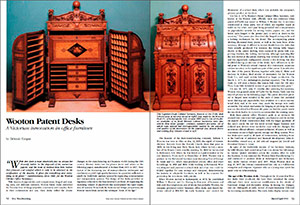
From Fine Woodworking #87
For the full article, download the PDF below:


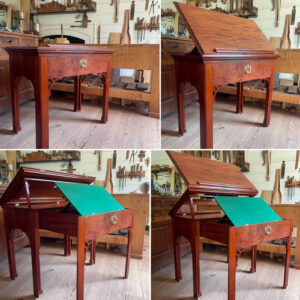
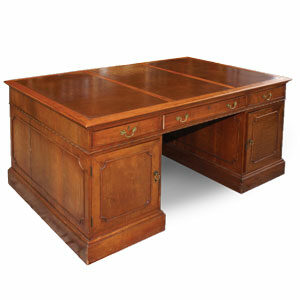
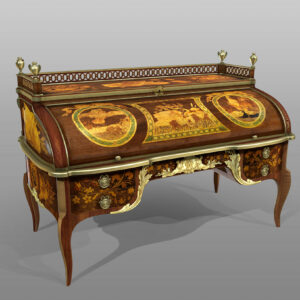







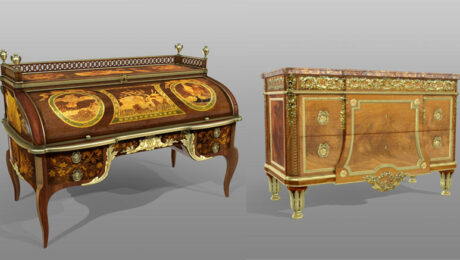








Log in or create an account to post a comment.
Sign up Log in